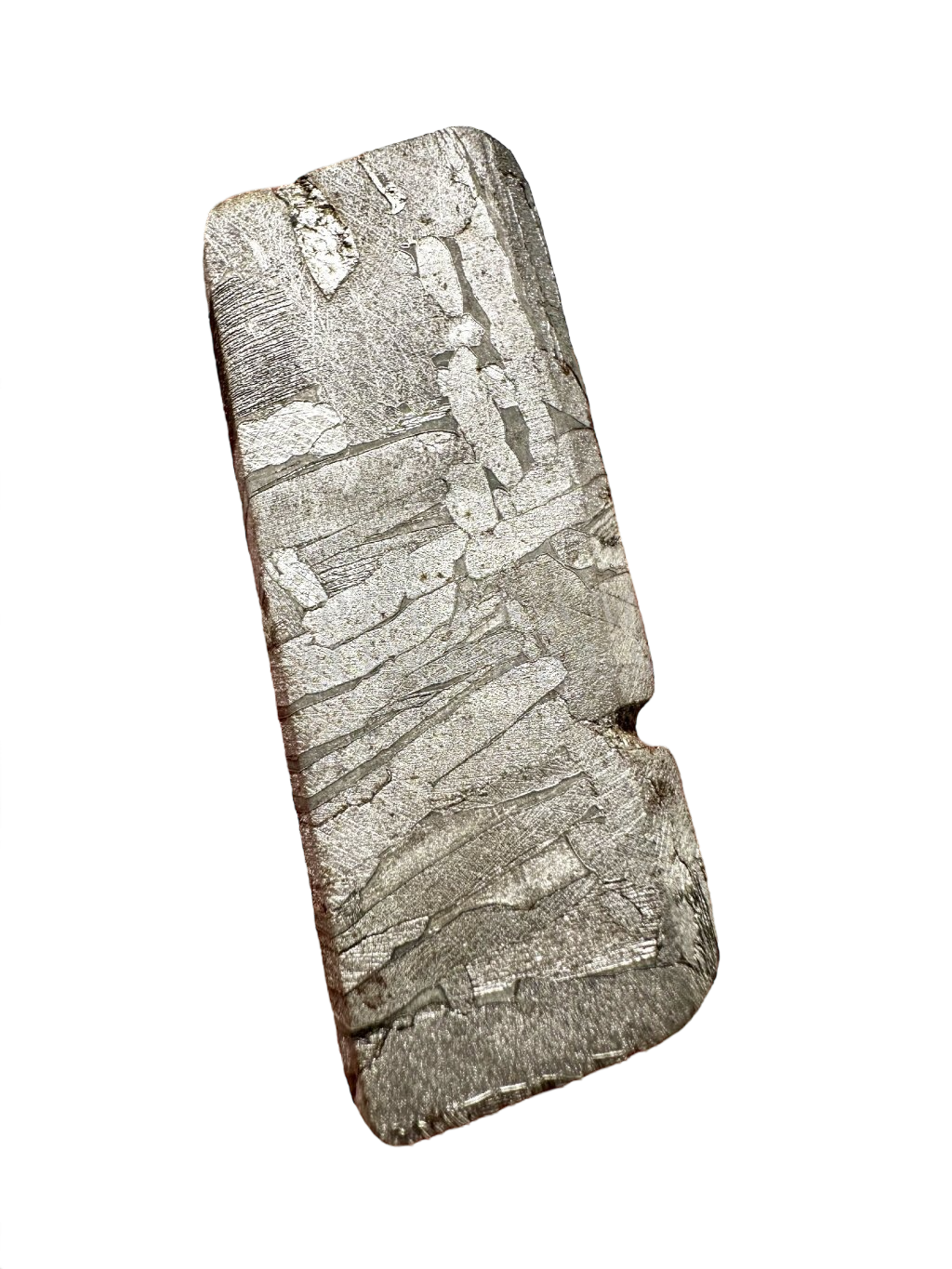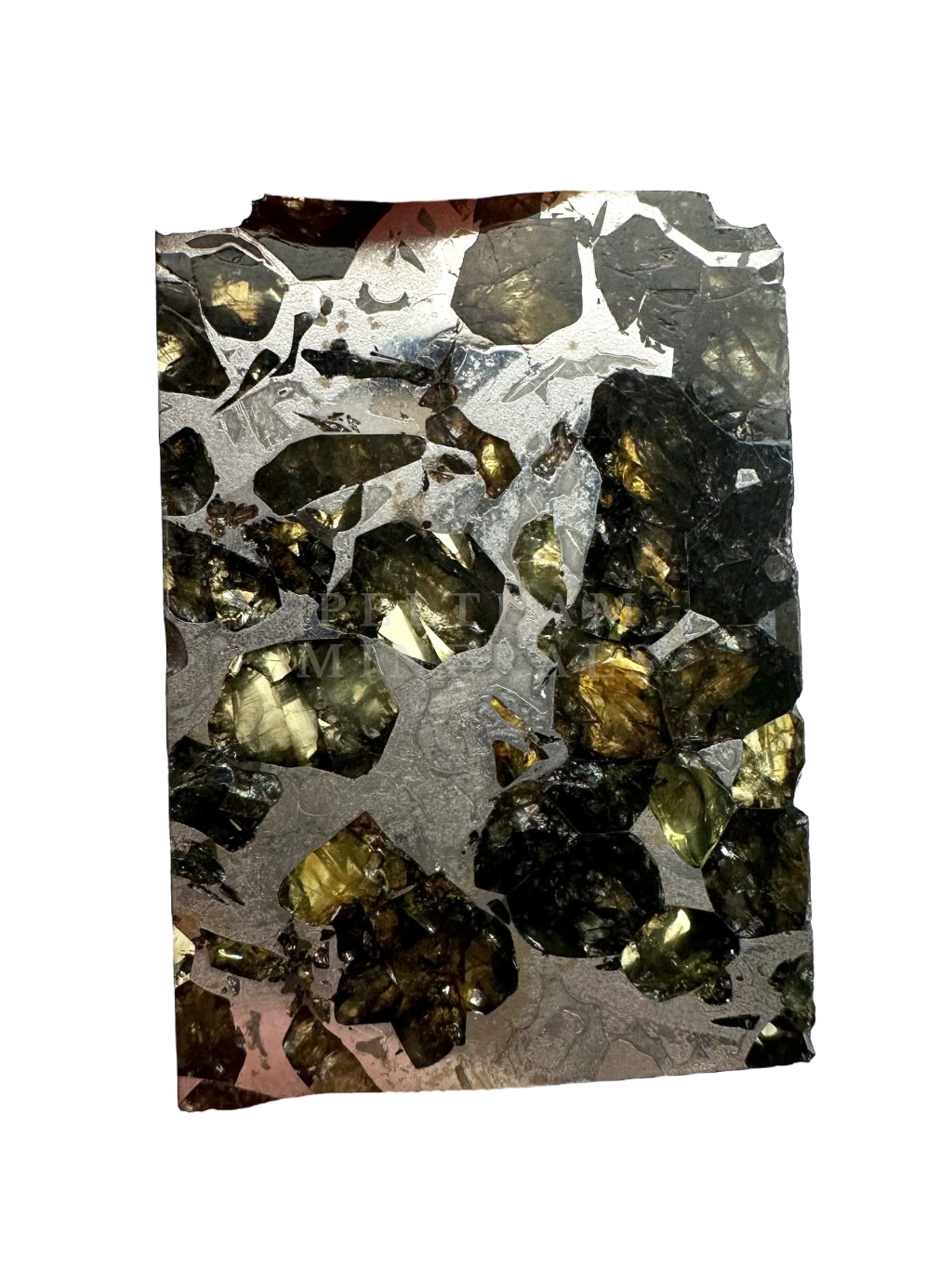Meteorite Seymchan – Magadan, Russia
Type: Pallasite
Locality: Magadan, Russia
Weight: 8,7g
Dimensions: 36 x 31 x 1 mm
Year found: 1967
Total known weight: 323,3 kg
Surface treatment: cut, polished slice
Note: The edge around the entire perimeter is preserved in its original form, as the slice was cut from a single raw piece. This is rare for slices of such small size.
Tip: The Widmanstätten patterns in this specimen are exceptionally well defined, which is not common – this is top quality.
| Category: | Seymchan |
|---|---|
| By name: | Seymchan |
| ? Type: | Stony-iron |
| ? Surface treatment: | Cut |
| Packaging: | None |
| Specialties: | Widmanstätten's patterns |
The Seymchan meteorite fell in the Magadan region near the settlement of Seymchan in Russia, although the exact date of its fall remains unknown. It was discovered in 1967, with the first mass weighing 272 kg found in June of that year, and a second piece weighing 51 kg found in October, just a few months later. During initial examinations, only metallic parts of the meteorite were discovered, leading to its classification as an iron meteorite of type IIE. It was not until 2004 that researchers found that 20% of the samples contained olivine crystals, which allowed them to reclassify Seymchan as a pallasite, a type of stony-iron meteorite.
Its unusual internal structure is particularly interesting. Some parts are rich in olivine inclusions—these are referred to as pallasitic sections—while others are composed almost entirely of iron-nickel alloys, primarily kamacite and taenite. In the metallic sections of the meteorite, polishing and etching with acid reveal characteristic Widmanstätten patterns, which form during the slow cooling of the iron-nickel alloy in space. In addition to iron and nickel, Seymchan also contains minerals such as troilite, schreibersite, and chromite.


How did it form?
From the perspective of its origin, the meteorite comes from a differentiated asteroid in the main belt between Mars and Jupiter, which underwent melting and internal separation during its early development. Heavier elements such as iron and nickel settled into the core, while lighter silicate minerals formed the mantle. Due to later collisions and dynamic processes, metallic and silicate components became mixed. The result is a unique meteorite containing both purely metallic sections and pallasitic parts rich in olivine crystals.






